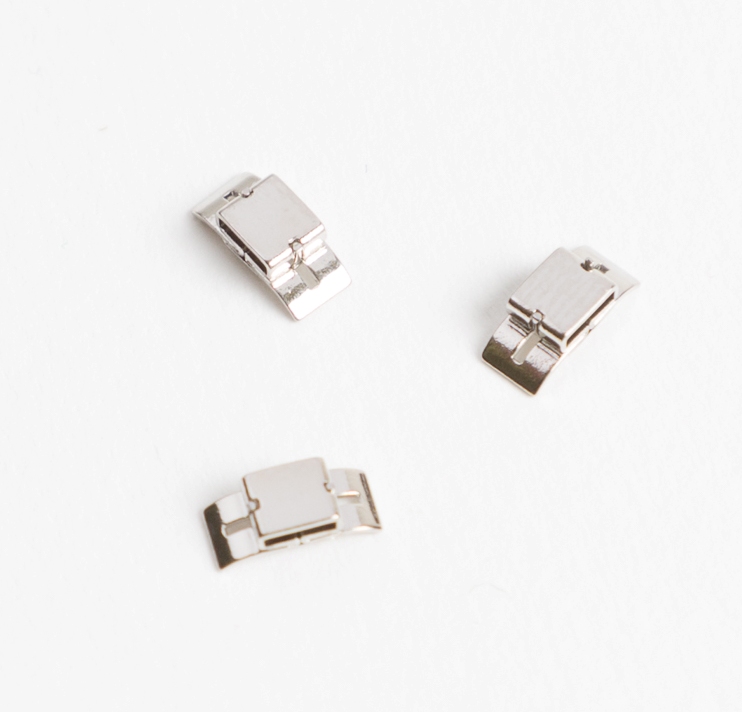Universal appliance
The universal bracket was invented by Spencer R. Atkinson in 1929. Atkinson was inspired by Calvin Case’s light wire technique and developed this bracket as a way of incorporating light forces into his technique. The appliance was unique in using a rectangular double channel bracket which could hold either one or two ribbon arch wires or round wires, or a combination thereof. The universal appliance was designed to apply precisely controlled gentle pressures to the teeth. Atkinson was a follower of Angle’s technique and was the Dean of the Angle School of Orthodontia. However, as the universal appliance was based on Angle’s E-Arch and the ribbon arch, Angle ended their relationship. The configuration of arch wires and contraction coil springs could be modified to suit the needs of individual cases.
The appliance underwent many changes, including many modifications by Atkinson. The appliance was produced by machinist Ret Alter. The universal appliance was very popular in Southern California during the 1930s and 1940s. Atkinson had the royalties assigned to the Basic Sciences Department at the California Institute of Technology for research in orthodontics. After Ret Alter died, his business was bought by Consolidated Electrodynamics Corporation. They paid royalties to the California Institute of Technology until the patent ran out after which they opened a new division called Unitek Corporation, a name based on their best selling product, the universal technique.

Universal Unitek senior spring lock brackets.